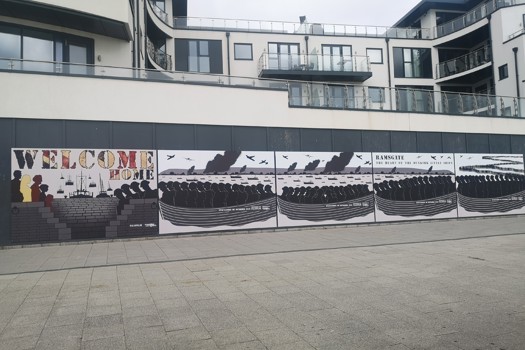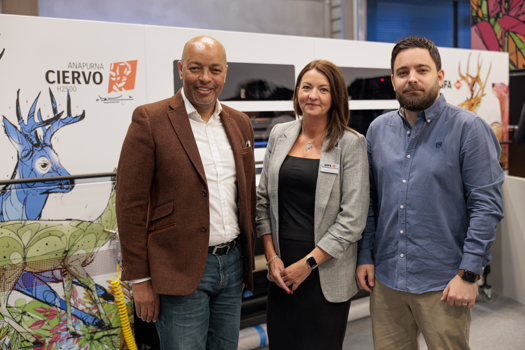The thermal platesetter was the first of its kind to be launched by Screen for the B2 market, and the decision to sell the 4000 model came after sales of the earlier 8000 model for B1 printers took off. Brian Filler, managing director at Screen UK, says: “As a manufacturer, we naturally had to go for the larger version first for printers who could proportionately justify the purchase.”
Screen had been selling its PFR 1050 platesetter, which worked using visible light, to B2 commercial printers for four years. Then thermal technology was introduced and became a far more viable and attractive option as there was no need for a dark room. Many new thermal platesetters that also came on the market at that time were unable to image plates as fast as the visible light devises. Screen was able to launch its thermal platesetter without losing speed and the first version could work with 15 plates an hour.
The 4000 also came with a punch in, so that when the plate comes off the setter it will register on the press straight away, saving operators considerable time. This element remains and buyers can choose which punch option they require relative to the presses that they use.
Screen also offered three levels of automation: fully automatic, semi-automatic and manual. At first, the fully automated devises made up around 75-80% of all orders. Filler explains: “We aimed the PlateRite at bigger printers to begin with, but as smaller companies gradually built up interest, they could only justify the manual option or else they simply had no room for full automation.”
Constantly evolving
With the constant advances in technology, the PlateRite 4000 has been speeded up and had various automation options introduced. The 4300 E, S and 6600 are now sold with speeds of 10, 20 and 30 plates per hour respectively. At Ipex in April, the E and S versions were showcased: the E with 32 laser diodes and the S with 44 laser diodes. There is also the option to upgrade from E to S.
The single auto loader unit (SAL) transfers the plate from the setter to the press, but needs manual loading and the multi auto loader (MAL) is the fully automated option.
This comes with a cassette that can hold 100 plates online at any one time and for those using different size presses two or three cassettes can be included and kept running through the night.
The head imaging on the PlateRite peaks at 830 nano meters, which will fit every major thermal plate from all the big manufacturers and they can run at up to 4,000dpi. The 4300E sells at around £57,750, the S version at £69,500 and the 6600 is around £80,000, dependent on speed, automation and optional extras.
Reliable to the core
Now six years old, the original 4000 machines are nearing the end of their working life, but many owners are not taking up Screen’s part exchange offer. “When people have finished with their payments, they do not want to replace them because they are still working so well. We can’t complain really because our reliability is what we ride ourselves on and it is the main strength of our machines,” Filler says.
Screen offers part exchange on all models and sells them on or passes them to a Screen distributor, such as Dennisons in Yorkshire. A fully automated PlateRite 4000 secondhand will cost around £45,000-£35,000
and Screen has a full selection of spare parts available.
For new machines there are several service contract options, a Gold contract guarantees a 12-hour response time and a Platinum option promises a response within six hours – 24 hours a day.
SPECIFICATIONS
Media
• Thermal Plates
Resolution
• Up to 4,000dpi
Speed (plates per hour)
• 6600: 30 plates
• 4300 S: 20 plates
• 4300 E: 10 plates
• Original 4000: 15 plates
Price
• 6600: £80,000
• 4300S: £69,000
• 4300 E: £57,750
• Used 4000: from £35,000
What to look for
• Condition of laser diodes
• Wear and tear on punch blocks
• Drive gear and rollers








